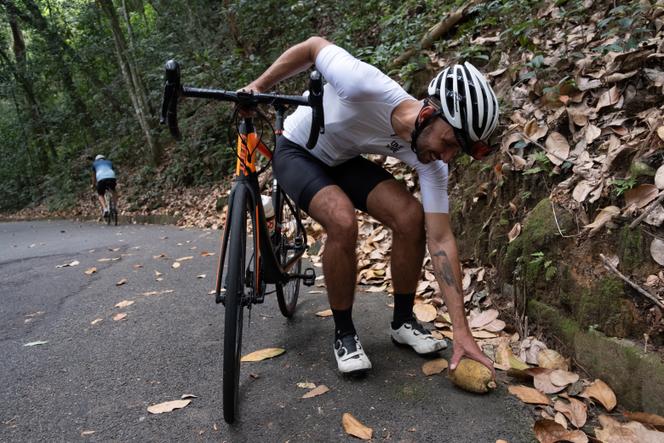

LETTER FROM RIO DE JANEIRO

Like many cyclists in Rio de Janeiro, Eduardo Richard, a 34-year-old oceanographer, trains several times a week in Tijuca National Park, a tropical oasis that stretches across a mountainous area in the heart of the city. "It's a cycling paradise: There are hardly any cars and lots of hills," said the athletically built sportsman, who was taking advantage of this Saturday morning in September to do his usual route before the heat became suffocating.
But on March 2, 2018, something happened to spoil his ride. As the young cyclist was navigating a bend as he came down a trail, he slipped on one of the huge green fruits that rot on the ground and create a stink in the forest. "My right knee bled and my elbow hurt for days," he said, as he revisited the scene of the accident.
Jackfruits, with their tough skin covered in small spikes and fibrous flesh, and which can weigh up to 30 kg, have become enemy number one for Rio de Janeiro's cyclists. "It's dangerous," said Richard, wearing a helmet and speed goggles. "If I'd been going any faster I could have broken my arm." The fruit, which grows in tropical climates, is abundant in the park: Just look up and you'll see them suspended among the trees that line the path and can reach 20 meters in height.

Richard considers himself "lucky." On February 10, 2021, a jackfruit landed on another cyclist's head, causing him to immediately faint. "As if all the problems we face on the road due to drivers' lack of respect weren't enough, now we have to worry about the JACKFRUITS!," the Rio de Janeiro Cyclists' Safety Committee exclaimed at the time on Facebook, calling on Tijuca National Park's management to "cut down" the jackfruit trees.
Scientists were delighted with this request: They too have been fighting for years to reduce the jackfruit population in protected areas such as Tijuca National Park. "It's an invasive species," said 41-year-old Rodolfo Abreu, a specialist in the exotic plants of the Atlantic Forest, the ecosystem that covers Tijuca National Park and stretches over 100,000 km2 of Brazil's southeast coast. Only around 10% of the original area of this thousand-year-old forest remains, having been devastated in the 19th century for coffee plantations. It is home to some 8,000 endemic plants.
According to the researcher, jackfruit trees pose a threat to the forest's original biodiversity. Imported from India by Portuguese colonists in the 17th century, probably to feed the slave population, "jackfruit are spreading uncontrollably and replace other plants," said the researcher. "If nothing is done, they could invade the whole forest."
You have 48.01% of this article left to read. The rest is for subscribers only.
